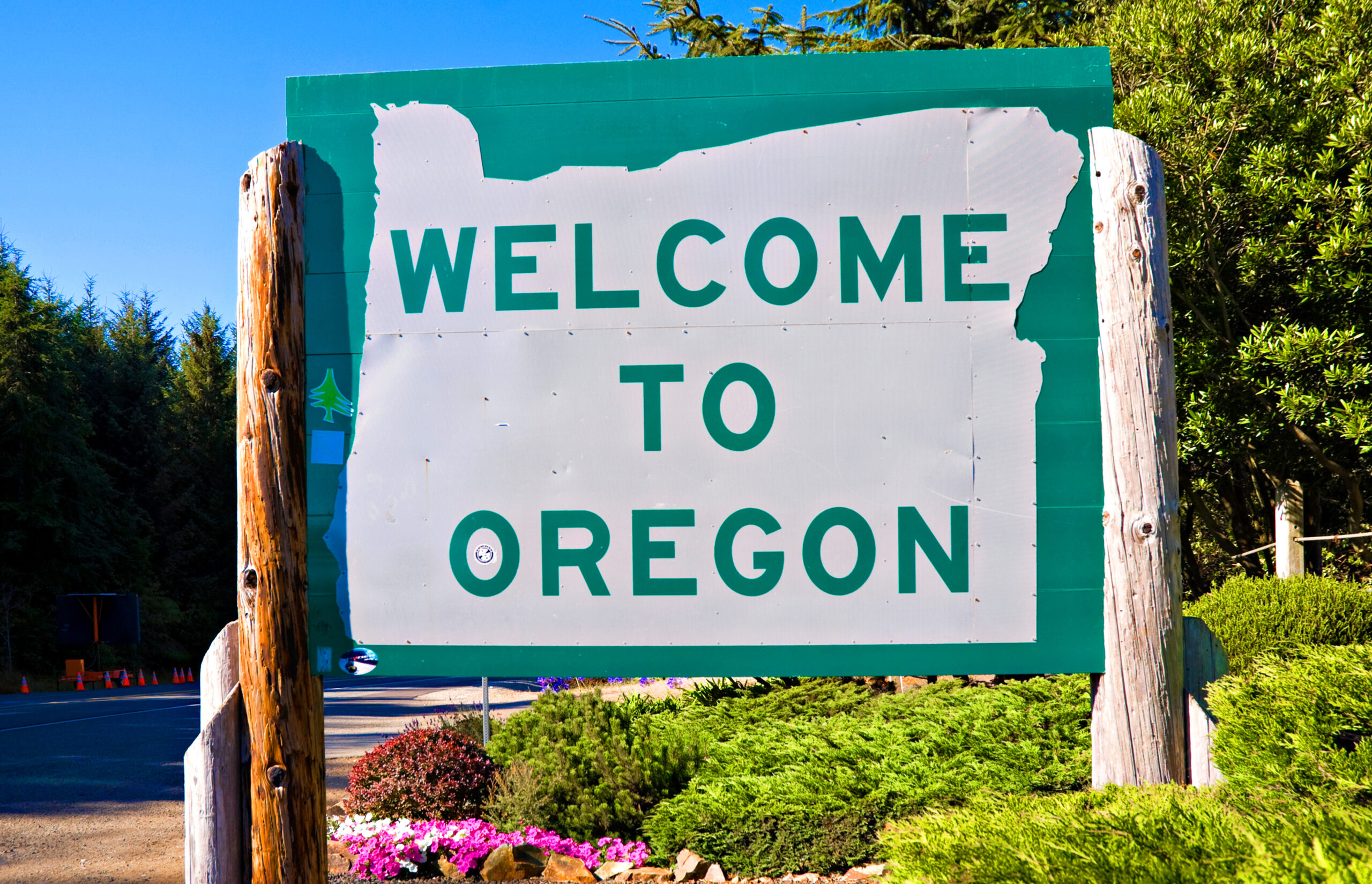Between the wild sweep of the Pacific and the silent sprawl of the Great Basin lies Oregon — a state that lives in the space between contrasts. It is a land shaped by water and fire, by old forests that breathe like cathedrals and deserts that shimmer with heat and solitude. Here, mist curls over moss-draped pines while, just a few hours away, red rock canyons blaze under endless blue.
Oregon is not loud in its beauty. It reveals itself in textures — the grain of driftwood along the coast, the scent of cedar after rain, the hum of bees above lavender fields. It’s a place that asks you to linger, to listen. To stand still long enough for the landscape to speak.
From the cliffs of the Columbia River Gorge to the silent depths of Crater Lake, from the creative hum of Portland to the serene rhythms of Ashland, Oregon is a mosaic of wildness and soul. It is the first light on a fishing boat in Newport, the taste of Pinot Noir in the Willamette Valley, the whisper of wind through ponderosa pine in Bend.
And through it all runs a certain spirit — part pioneer, part poet. Oregonians move to their own rhythm, shaped by seasons and stories, rooted in land and possibility. To travel through Oregon is not merely to see; it is to feel the continuity between wilderness and wonder.
Here, the earth still feels young, raw, alive. And whether you walk its beaches or climb its peaks, Oregon leaves its mark not through spectacle, but through grace — the quiet certainty that beauty, once found, never fully leaves you.
Portland: The River City of Imagination
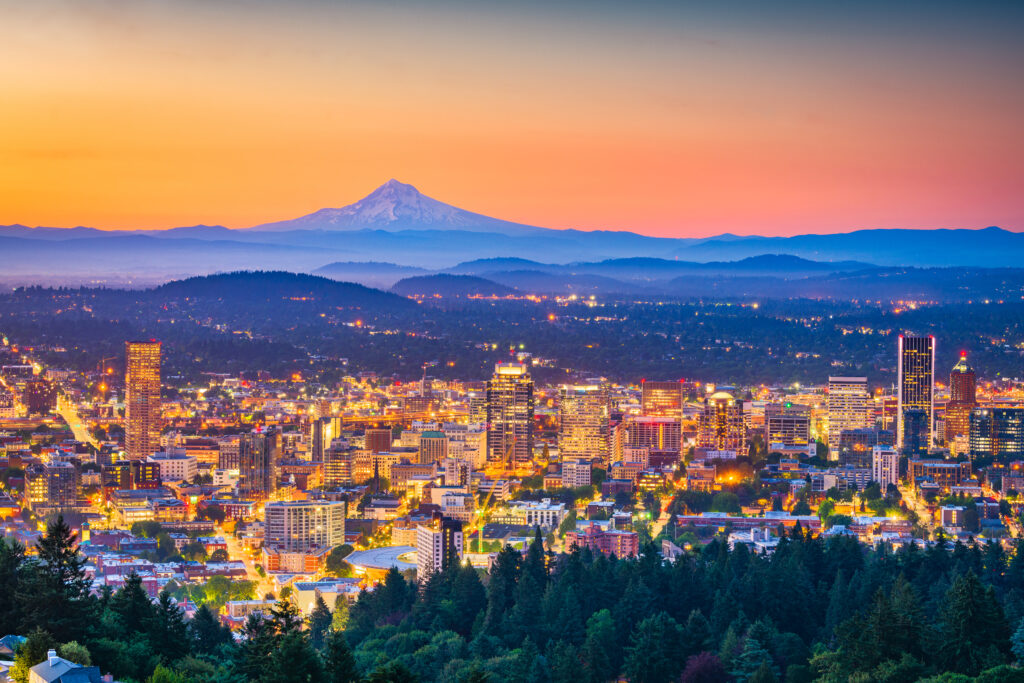
No city in America balances creativity and conscience quite like Portland. Framed by forested hills and bisected by the Willamette River, it’s a city that feels both handcrafted and spontaneous, a place where art and activism, sustainability and strangeness all coexist with effortless harmony.
Portland is a city of neighborhoods, each its own world: the tree-lined charm of Nob Hill, the indie pulse of Hawthorne, the riverside calm of Sellwood, and the rising innovation of the Pearl District. Cafés serve single-origin coffee roasted just down the block; bookstores sprawl like sanctuaries (none more beloved than Powell’s City of Books, the world’s largest independent bookstore); and food carts cluster on corners, offering a global feast from kimchi to kebabs.

But Portland’s heart beats in its green spaces — Forest Park, one of the largest urban forests in America, and the Japanese Garden, where stillness and precision turn nature into art. The bridges that arc across the Willamette aren’t just infrastructure; they’re metaphors — connecting east and west, old and new, the pragmatic and the poetic.
Portland is not perfect — it wrestles with the same challenges as any modern city — but it wears its contradictions honestly. It is both gritty and idealistic, practical and visionary. The scent of rain is constant, the light soft and introspective. And when the sun breaks through, the entire city glows, as if every mural, maple, and mind were briefly illuminated from within.
The Columbia River Gorge: Where Water Carves the World
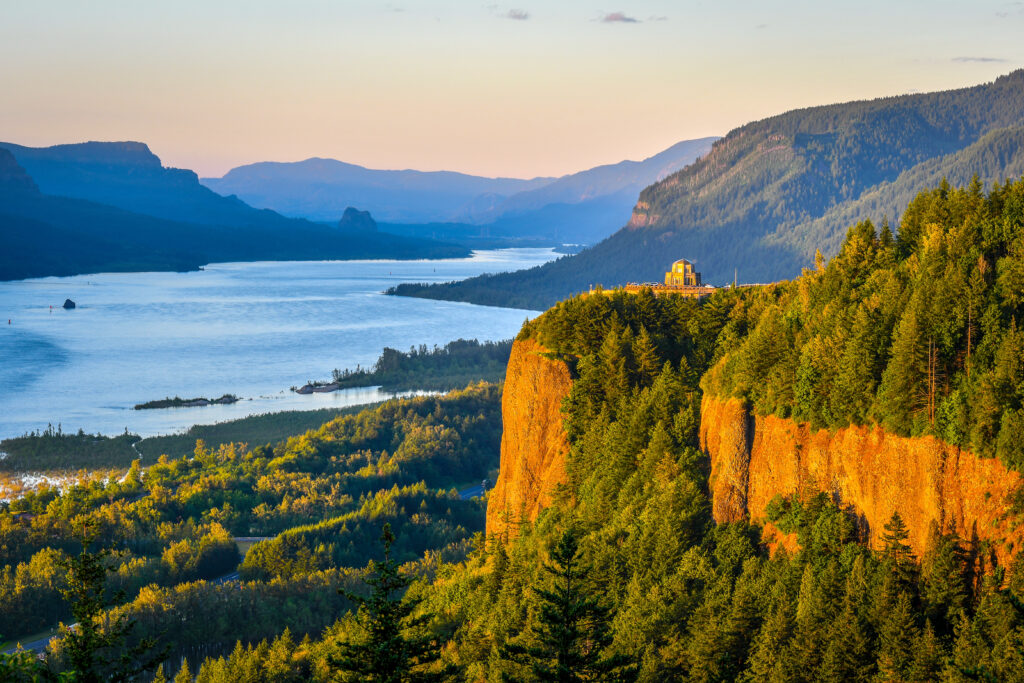
There is no introduction to Oregon more dramatic than the Columbia River Gorge — a corridor of cliffs, waterfalls, and wind that slices through the Cascade Range like a cathedral of stone and sky. It is the border between Oregon and Washington, but also between the everyday and the sublime.
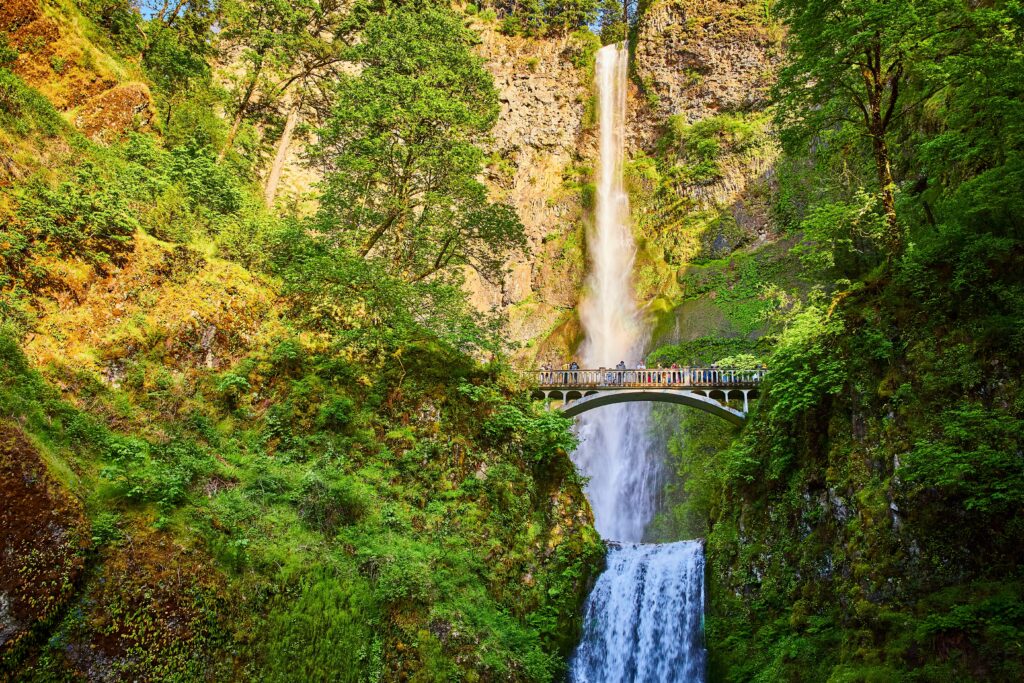
At Multnomah Falls, water plunges more than 600 feet in a two-tiered cascade framed by ferns and basalt. At Latourell, Horsetail, and Wahkeena Falls, trails wind through green canyons dripping with moss and mist. The air here is charged — damp, ion-rich, alive with sound.

High above, the Historic Columbia River Highway offers panoramic views from Crown Point’s Vista House, where the river stretches east toward desert and west toward ocean. Windsurfers dance like sparks over the water near Hood River, their bright sails flashing against the gray-blue waves.
The Gorge is both ancient and ever-changing. Formed by cataclysmic Ice Age floods, it continues to evolve with each gust of wind and rush of rain. It is a place that humbles and uplifts in equal measure — where the land itself seems to be breathing, whispering, alive.
Mount Hood: The Sacred Peak of Snow and Silence

Seen from Portland on a clear day, Mount Hood appears like a revelation — perfectly symmetrical, perpetually snowcapped, serene yet commanding. Rising over 11,000 feet, it is Oregon’s highest mountain and perhaps its most enduring symbol — a reminder of both nature’s power and its poise.
In winter, its slopes come alive with skiers and snowboarders at Timberline Lodge and Mount Hood Meadows. In summer, wildflowers blanket the trails that encircle the mountain, and meltwater streams rush toward the Columbia. The Timberline Trail, circling the peak, reveals every mood of the mountain — glacier, meadow, forest, ash.

But Mount Hood is more than recreation; it is reverence. The mountain has long been sacred to Indigenous peoples, who knew it as Wy’east. Its presence shapes weather, mood, and myth. On quiet mornings, when the peak reflects in Trillium Lake, the scene feels timeless — as if you are seeing not just a place, but a vision of balance itself.
The Oregon Coast: The Edge of Eternity

Stretching for more than 360 miles, the Oregon Coast is not a single destination but a continuous masterpiece — cliffs, dunes, forests, and small towns stitched together by Highway 101. Unlike many shorelines, every inch of it is public — open to wanderers, dreamers, and those drawn to the meeting of land and sea.

At Cannon Beach, Haystack Rock rises like a sentinel from the surf, seabirds wheeling overhead. Ecola State Park offers views that defy language — headlands drenched in mist, waves breaking against stone like time itself. Further south, Newport mixes fishing grit with coastal charm, while Yachats whispers tranquility among tidepools and sea lions.
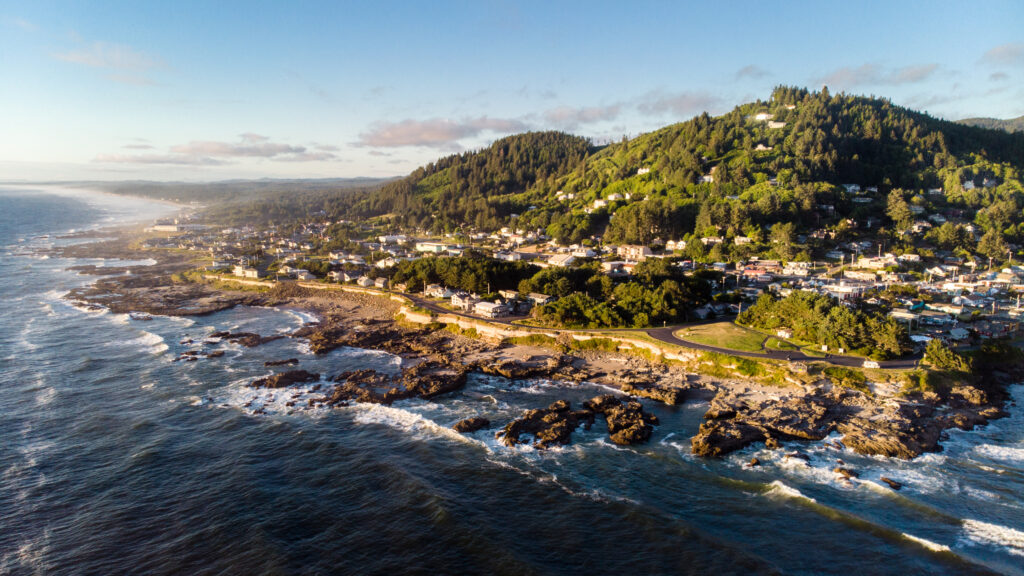
The southern coast — from Bandon to Brookings — grows wilder still, its stacks and coves shaped by centuries of storm and salt. Walk the Samuel H. Boardman Scenic Corridor, and you’ll understand why poets lose themselves here: every curve reveals another view so raw, so luminous, that words fall away.
The Oregon Coast isn’t simply scenic — it’s elemental. It reminds you that beauty is not control, but surrender.
Crater Lake: The Deepest Blue
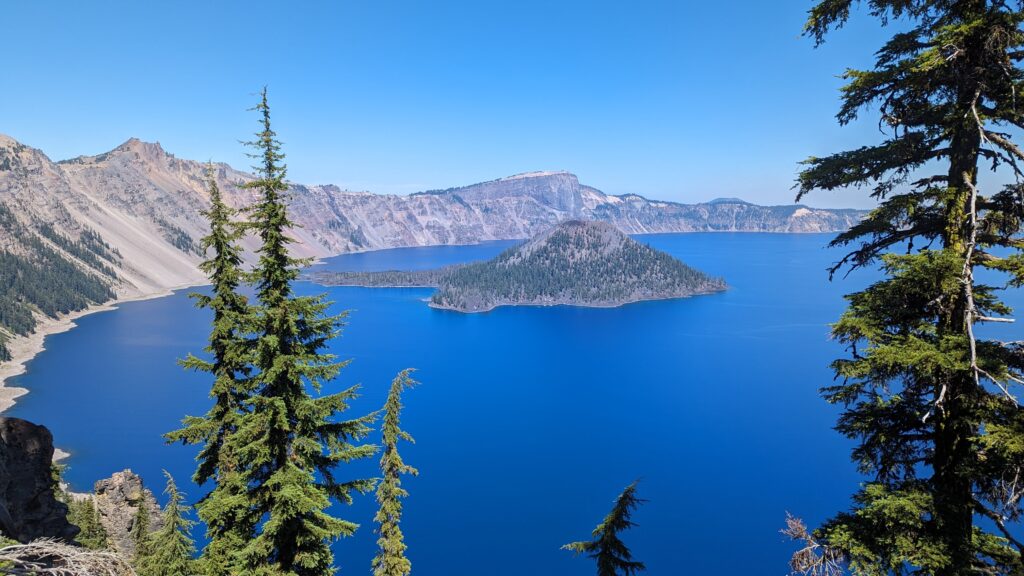
At the heart of southern Oregon lies Crater Lake, a place so astonishing it feels like a dream materialized. Formed nearly 8,000 years ago when Mount Mazama collapsed into itself, this lake — the deepest in the United States — holds water so pure it seems to radiate its own light.

Standing on the rim, you look down into an impossible shade of blue — deep, silent, otherworldly. The lake’s serenity belies its volcanic origins, the quiet surface resting above a furnace of ancient fire. Wizard Island, a small cinder cone rising from the lake’s western edge, looks like a remnant from some forgotten myth.

Drive the Rim Drive, tracing the 33-mile circle around the caldera, and every turn opens to a new revelation: forests of fir and hemlock, shifting reflections, and in the distance, the ghostly shape of the Cascades. In winter, Crater Lake becomes a world of snow — still, immense, untouched.
Few places on Earth hold such purity of silence. To stand here at sunrise, when light spills over the rim and ignites the water below, is to witness the sacred geometry of the natural world — perfect, unbroken, eternal.
Bend: The Mountain Town with a Spirit of Fire
If Oregon had a soul made of sunlight and snowmelt, it would be Bend. Once a small mill town on the Deschutes River, it’s now a haven for outdoor lovers, brewers, and dreamers — a place where adventure and artistry coexist beneath the shadow of the Three Sisters Mountains.

Bend is the kind of town that wakes early. Cyclists trace forest trails as dawn lifts over Pilot Butte. Kayakers and anglers move along the Deschutes, while skiers head toward Mount Bachelor, one of the Pacific Northwest’s premier alpine resorts. But adventure here isn’t just sport — it’s communion. The land invites motion; the sky demands wonder.

Downtown, restored brick buildings house cafés, galleries, and craft breweries — Deschutes Brewery among the most iconic. Yet what makes Bend unforgettable isn’t the recreation or refinement — it’s the rhythm. The sunsets burn gold over sage and lava rock, the air smells faintly of juniper and snow, and the mountains glow long after the day is done.
Bend is the frontier softened by grace — a place that proves wilderness can still be home.
The Willamette Valley: Where Earth Becomes Wine
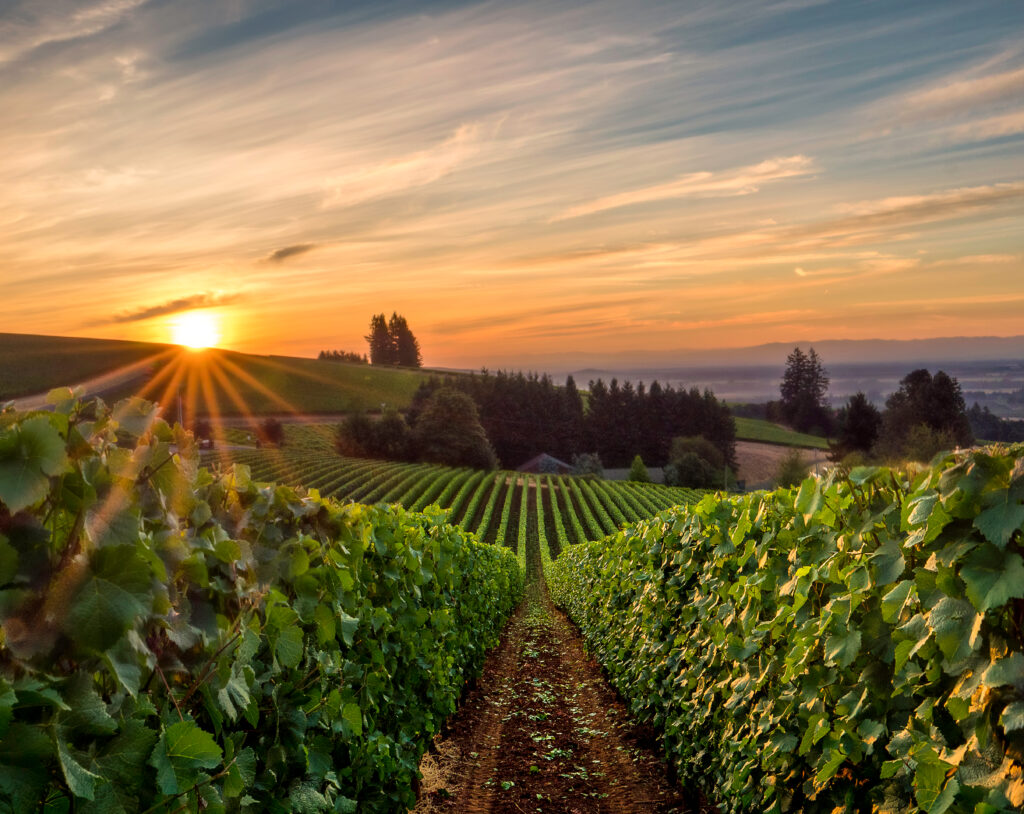
Between the Coast and Cascade ranges stretches a green, fertile corridor — the Willamette Valley, Oregon’s beating agricultural heart. Here, misty mornings yield to gentle sun, and the soil — rich with ancient volcanic ash — nourishes some of the finest Pinot Noir on Earth.
This valley isn’t just for wine connoisseurs. It’s for anyone who believes in the slow pleasures of place — in conversation over a glass beneath oak trees, in walking through rows of vines still wet with dew. From McMinnville to Newberg, Dundee to Eugene, small wineries tell big stories — of patience, craft, and connection.
The land feels European in its rhythm but purely Oregonian in spirit: understated, sustainable, quietly elegant. Visit in autumn, when vineyards burn gold and crimson under fog-dappled skies, and you’ll feel it — the valley breathing, alive with abundance.
Here, the good life is measured not by speed but by savoring. Each sip carries a sense of the earth that made it — grounded, generous, and true.
Ashland: The Heart of the Rogue Valley

Nestled in the southern hills near the California border, Ashland is a town of art and introspection — home to the world-renowned Oregon Shakespeare Festival, and surrounded by orchards, mountains, and mineral springs.
At its center lies Lithia Park, 93 acres of Japanese maples, streams, and shaded paths that wind from downtown into the foothills of the Siskiyou Mountains. When the festival lights up its theaters from February through October, Ashland becomes a symphony of words and imagination — actors, poets, and travelers gathering under starlit skies.
But Ashland’s magic lingers even when the stage is silent. Wander its streets and you’ll find a town that values both reflection and vitality — from cozy bookshops to farm-to-table bistros, from yoga studios to the calm pulse of the Rogue River nearby.
It’s a place where nature and art share the same breath, where creativity doesn’t compete with the landscape — it rises from it.
The Painted Hills: Oregon’s Desert of Time

East of the Cascades, in the John Day Fossil Beds National Monument, lies one of Oregon’s most surreal landscapes — the Painted Hills. Here, the earth itself tells a story in color.

Bands of red, gold, black, and ochre ripple across soft clay hills, each layer representing a different epoch — ancient forests, volcanic ash, long-vanished lakes. To walk the short Painted Hills Trail is to move through millions of years of geologic memory.
At sunset, the colors deepen — crimson becomes rust, gold turns to amber, and the air seems to shimmer with history. It’s quiet here, almost reverent. The silence feels vast, as if the land itself were listening.
The Painted Hills remind you that time is both fleeting and infinite. That beauty, like the earth, is patient.
Silver Falls State Park: The Trail of Ten Waterfalls
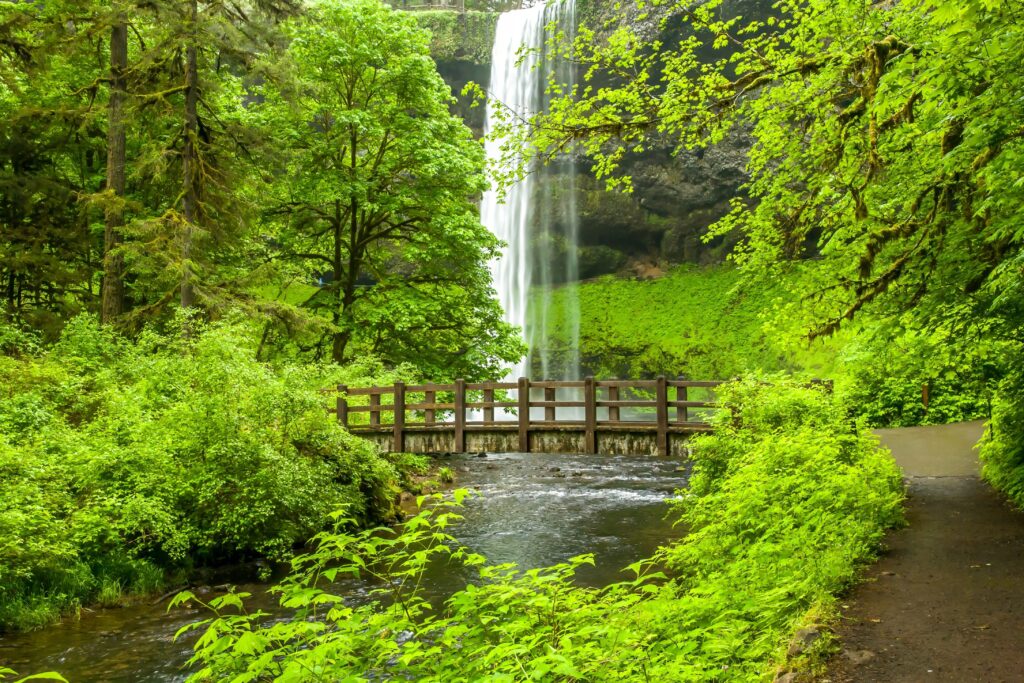
If Oregon had a fairytale forest, it would be Silver Falls State Park — a realm of emerald moss, basalt canyons, and cascading water so constant it feels like the heartbeat of the earth.
Just outside Salem, the Trail of Ten Falls winds nearly nine miles through old-growth forest, past waterfalls that leap from cliffs and slide through fern-choked ravines. South Falls, the park’s most famous, drops 177 feet — and you can walk behind it, passing through a cool misting cavern carved by centuries of flow.
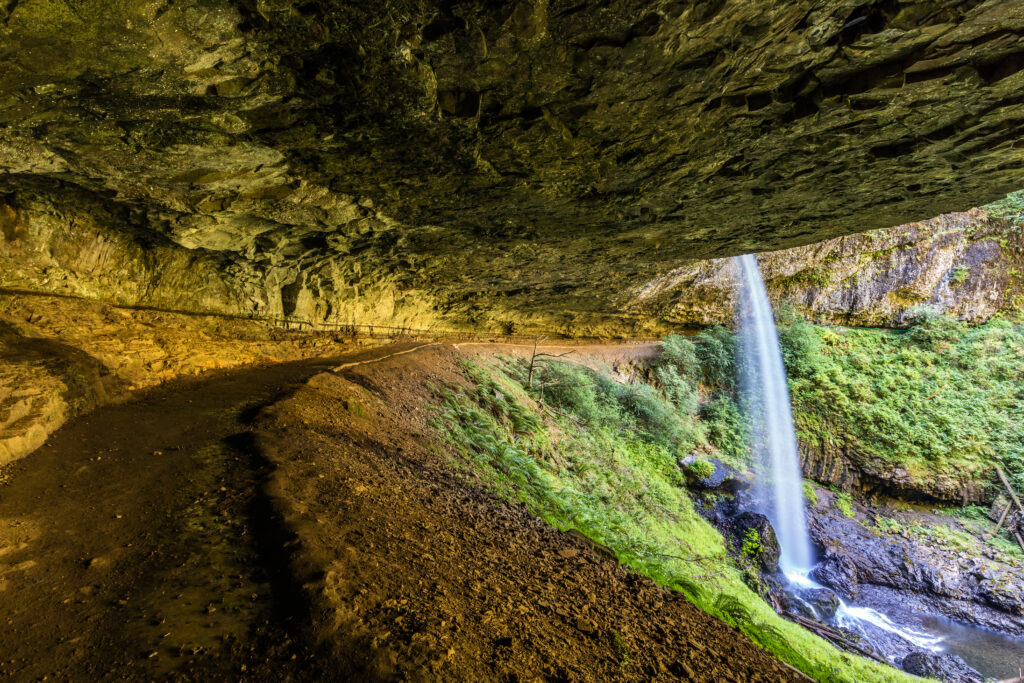
The forest here feels enchanted — every log alive with lichens, every breeze carrying the scent of rain. Even on cloudy days, the light seems to shimmer through the leaves, silver and green.
Silver Falls is not about spectacle; it’s about surrender. The sound of falling water fills your chest, slows your thoughts, and reminds you of something primal and pure — the rhythm of renewal that never ends.
Eugene: The Soul of the Willamette

Between forest and foothill, Eugene hums with a gentle, restless energy — a college town that somehow feels both intellectual and deeply organic. Home to the University of Oregon, Eugene blends scholarship, sustainability, and a love for life’s simplest joys: cycling, coffee, conversation.
The Willamette River winds through town, shaded by old oaks and maples. Paths stretch for miles, linking neighborhoods to nature in a way that feels almost European. Farmers’ markets fill the streets with scent and color, and the hum of music seems ever-present — in the air, in cafés, even drifting from porches.
But Eugene’s soul lies in its balance: between activism and art, city and forest, movement and mindfulness. Visit Mount Pisgah Arboretum at sunrise or paddle down the Willamette in summer light — and you’ll feel what makes this place special. It’s not about grandeur, but grace: a rhythm of living that feels human, kind, and true.
Mount Jefferson Wilderness: Oregon’s Wild Cathedral
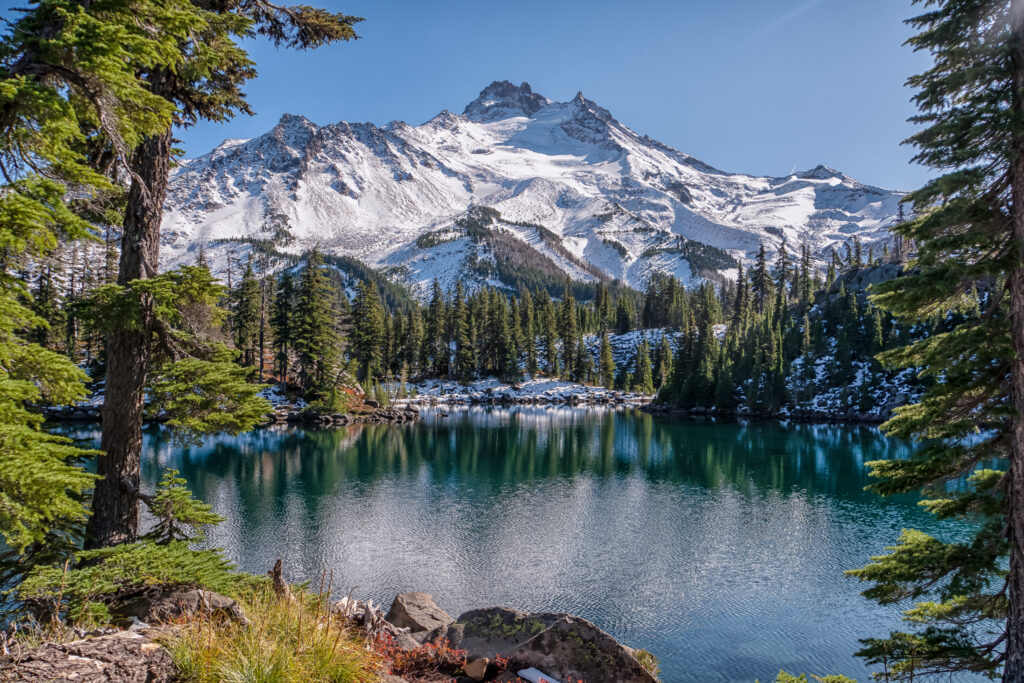
Few landscapes command awe like the Mount Jefferson Wilderness, where the Cascade Range rises in sudden splendor. The namesake peak — Oregon’s second highest — pierces the sky at over 10,000 feet, its glacial slopes mirrored in alpine lakes of startling clarity.
This is wilderness in the truest sense: a place where silence has weight. Trails wind through ancient forest and meadow, bursting with wildflowers each summer. Jefferson Park, a high plateau surrounded by peaks, feels almost sacred — a natural amphitheater of snow and stone.
The journey here requires effort, but the reward is profound. At dusk, when the mountain glows rose and gold, the world seems to pause. In that stillness, one senses Oregon’s eternal paradox — rugged yet tender, immense yet intimate.
Smith Rock State Park: The Birthplace of American Sport Climbing

Rising abruptly from the high desert near Terrebonne, Smith Rock looks like something carved by gods. Its towers of tuff and basalt glow amber in late sunlight, and from below, climbers seem to scale the sky itself.

This is where modern American sport climbing began. Routes like Monkey Face and Chain Reaction are now legendary, but even if you never touch the rock, the landscape captivates. The Crooked River winds through the canyon, reflecting spires and eagles alike.
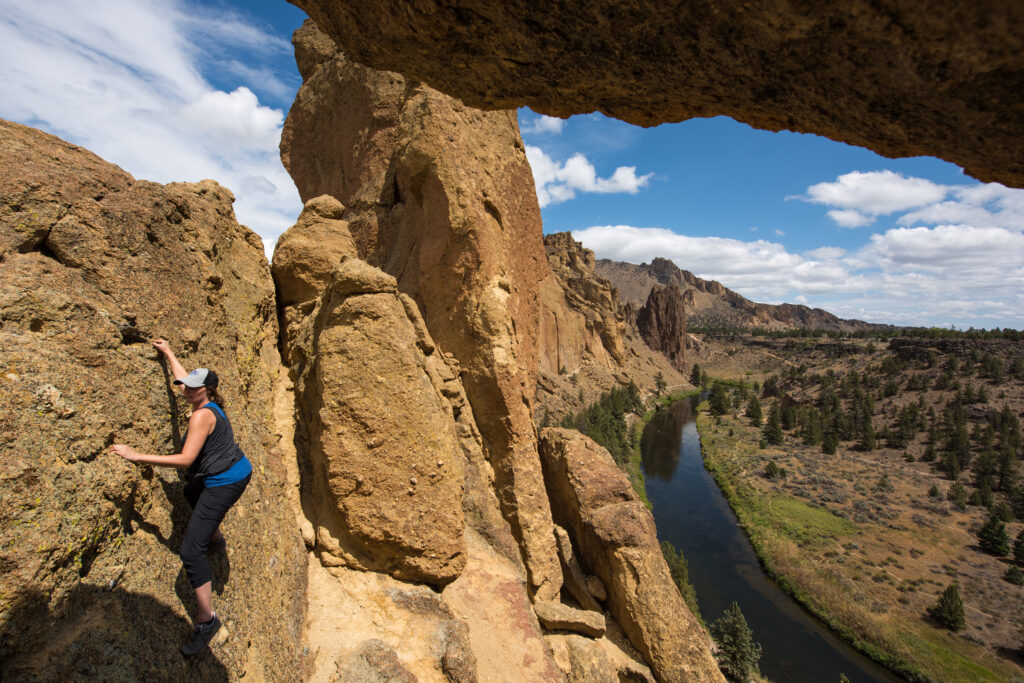
Hikers follow the Misery Ridge Trail, ascending to views that stretch across the desert toward snow-capped peaks. Dawn here is quiet except for ravens and the slow warmth of light returning. Smith Rock is both playground and pilgrimage — proof that stone can be a teacher, and the body a vessel of faith.
The Alvord Desert: Silence at the Edge of Sky

Southeast Oregon holds one of America’s most haunting landscapes: the Alvord Desert, a vast salt flat bordered by the towering Steens Mountain. For much of the year, it’s a dry lakebed — cracked, pale, endless. And yet, it feels full.

To stand here is to feel suspended between worlds. The horizon ripples with mirage; the wind carries no sound but its own. Travelers drive across the playa, camp beneath stars brighter than any city sky, and wake to a silence that feels ancient.

Nearby, Alvord Hot Springs offers warmth against the desert chill. And when rare rains come, the flats fill with shallow water, transforming the plain into a perfect mirror of heaven.
The Alvord is Oregon’s most existential landscape — austere, luminous, alive in stillness. It teaches humility, awe, and the quiet grace of solitude.
Oregon Dunes National Recreation Area: Sand and Sea in Motion

Between Florence and Coos Bay, the Oregon Coast transforms into something unexpected — 40 miles of rolling sand dunes, some rising over 500 feet above the Pacific.
The Oregon Dunes National Recreation Area is where forest meets ocean in constant motion. Pines stand rooted in sand, their trunks half-buried; mist sweeps across ridges like breath. Visitors hike, ride dune buggies, or simply walk until the world falls away — leaving only wind, texture, and light.
It’s an otherworldly place. At sunset, when the dunes glow gold and the surf murmurs beyond the horizon, it feels as though the earth itself were exhaling. The dunes remind you that nothing in nature is fixed — everything drifts, reshapes, and begins again.
Hood River: Where Wind Meets Mountain

On the banks of the Columbia River Gorge, the town of Hood River pulses with elemental energy. This is one of the world’s premier windsurfing and kiteboarding destinations, where the river channels fierce Pacific winds beneath the snow-laden crown of Mount Hood.
Yet the thrill of the water is matched by the calm of the land. Orchards blossom along the Fruit Loop, vineyards spill down hillsides, and trails lead into forests where waterfalls veil basalt cliffs. The air smells of pine, apple, and adventure.
Hood River captures the Oregon ideal — wild but refined, where adrenaline and artistry coexist. To watch the sun fall behind the gorge as sails flash across the river is to witness harmony — nature and humanity moving to the same rhythm.
Cannon Beach: Icon of the Oregon Coast

Few places define Oregon’s coastline like Cannon Beach, where the immense Haystack Rock rises from the surf like a monument to time.
At low tide, the beach stretches vast and luminous, dotted with tide pools alive with sea stars and anemones. Gulls cry overhead, and mist softens every edge of the horizon. Artists and dreamers have long come here for inspiration — to paint, to write, or simply to watch the sea breathe.

The town itself is charming and understated: galleries, cafés, shingled cottages, and salt air that seeps into everything. In winter, storms transform the beach into a theater of elemental power — wind, water, and light performing their endless cycle.
Cannon Beach isn’t about spectacle; it’s about presence. A place where the ocean teaches stillness through its roar.
Klamath Basin: A Wetland of Wings

Straddling the southern Oregon border lies the Klamath Basin, a vast expanse of lakes and marshes that hosts one of North America’s greatest bird migrations.
Each winter, hundreds of thousands of snow geese, sandhill cranes, and bald eagles fill the sky in a living ballet. The Klamath Basin National Wildlife Refuges protect this fragile ecosystem — a sanctuary of life shaped by water and sky.
At dawn, mist rises from the wetlands in soft plumes. The cries of cranes echo across open fields, ancient and haunting. For birders and wanderers alike, it’s a place of quiet wonder — a reminder of the delicate threads that bind all living things.
The Klamath Basin is less a destination than a revelation — where the ordinary becomes sacred simply by attention.
Wallowa Lake & the Eagle Cap Wilderness: Oregon’s Hidden Alps

In the far northeast, where Oregon meets Idaho, the Wallowa Mountains rise like a secret kingdom. Glacial valleys, sapphire lakes, and high granite peaks define this region — sometimes called “the Alps of Oregon.”

Wallowa Lake, near the town of Joseph, is the heart of it all — a long, clear mirror framed by snow-dusted summits. Trails lead into the Eagle Cap Wilderness, a vast, untouched expanse where mountain goats graze and rivers sing unseen through forest.
This is sacred land, once home to the Nez Perce, whose legacy lingers in the quiet dignity of the place. Here, history and landscape intertwine — resilient, luminous, alive with spirit.
Wallowa isn’t just beautiful; it’s transcendent. A landscape that reminds you of what endures when everything else fades.
The Three Sisters Wilderness: The Heart of the Cascades
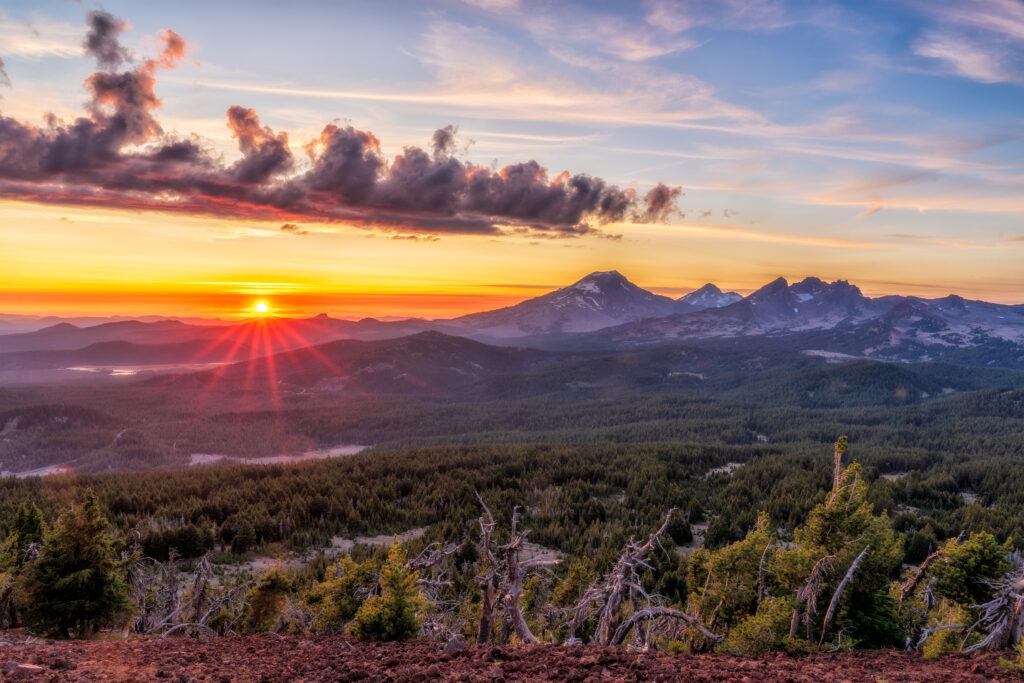
At the center of Oregon’s wild heart rise the Three Sisters — Faith, Hope, and Charity — volcanic peaks wrapped in glaciers and myth.
This wilderness area, spanning nearly 300,000 acres, is Oregon at its most elemental: lava fields, alpine meadows, mirror lakes, and skies vast enough to swallow thought. In summer, wildflowers explode in color beneath snowcapped ridges. In autumn, the air smells of pine and frost.

Trails weave among the peaks, each turn offering communion — with silence, with scale, with the slow rhythm of the natural world. The Green Lakes Trail and South Sister climb are Oregon pilgrimages — demanding but divine.
The Three Sisters embody Oregon’s paradox — fierce yet nurturing, remote yet radiant with presence. To walk here is to remember how small, and how wondrous, it is simply to exist.
Tillamook Coast: Land of Mist and Cream
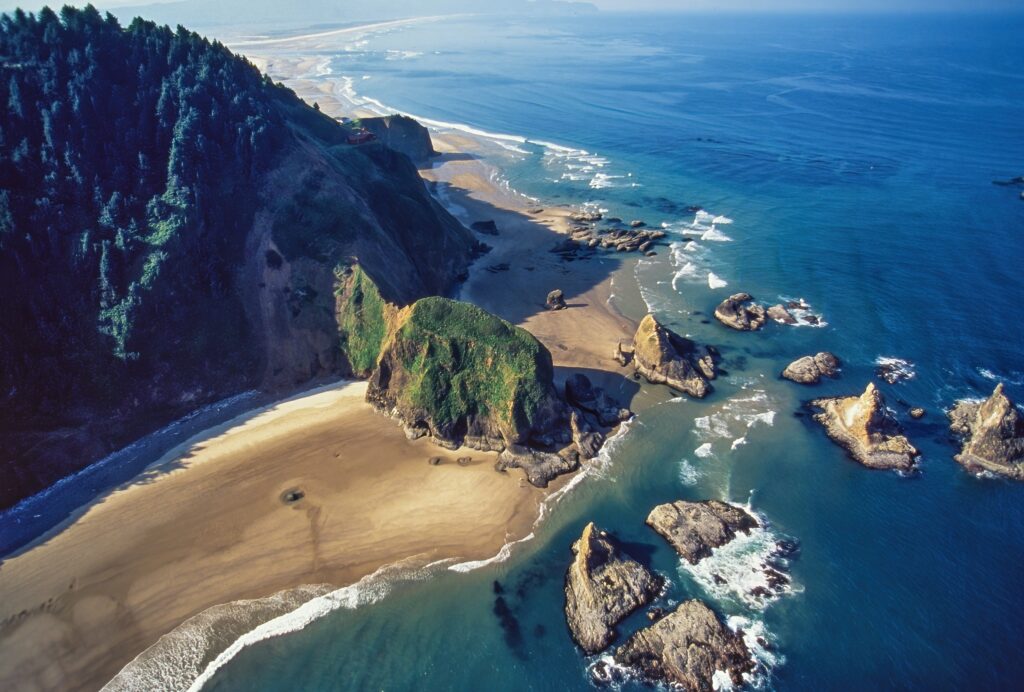
The Tillamook Coast feels like a softer echo of Oregon’s wilder shores — green pastures giving way to tidal inlets and a coastline veiled in fog. It’s a place defined by its bounty: salt, forest, and milk.

Here, the famous Tillamook Creamery has turned local dairy into legend, while the surrounding forests whisper of rain and cedar. The Three Capes Scenic Route threads past Cape Meares, Cape Lookout, and Cape Kiwanda, each cape a fortress of stone braced against the Pacific’s restless moods.
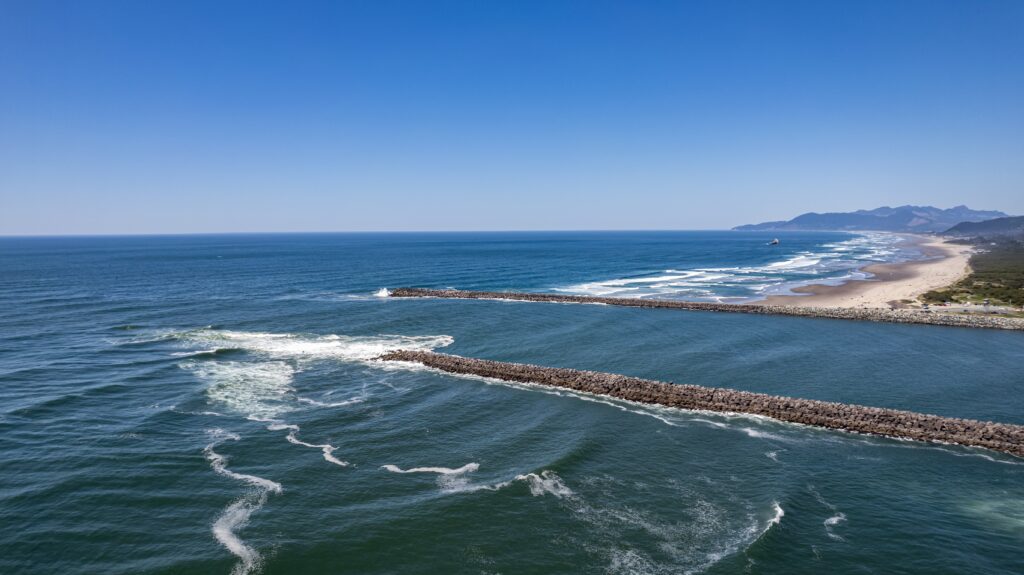
Inland, rivers curl through mossy ravines; on the beaches, locals dig for clams or watch storms roll in like living creatures. The Tillamook Coast isn’t dramatic — it’s tender, a landscape built for lingering rather than conquering.
There’s comfort in its gray horizons and the quiet generosity of its people. It’s the kind of place where the word “home” feels perfectly at ease on the tongue.
Astoria: Where the River Meets the Sea

Perched on the northwestern tip of Oregon, Astoria is where the Columbia River — vast and mythic — finally meets the Pacific. It’s one of the oldest American settlements west of the Rockies, and history still hums through its streets.

The town climbs steep hills above the water, crowned by the Astoria Column, from which the whole confluence spreads beneath you: ocean, river, forest, and cloud. The air smells of salt and pine resin; the gulls cry over rusting piers and ships that still pass through the channel.
Astoria has always been a place of thresholds — between wilderness and civilization, memory and reinvention. Victorian houses, maritime museums, and cafés overlook the tide. Each evening, fog drifts through town like a visiting ghost.
Astoria doesn’t need to shout its beauty. It simply stands — quiet, enduring, watching the world flow by, as it has for two centuries.
Steens Mountain: The Solitude of Stone

Far from the coast, in Oregon’s southeast corner, rises Steens Mountain — a 50-mile-long fault-block ridge that towers above the desert like a sleeping giant. It’s one of the state’s least-visited wonders, yet perhaps its most profound.

From the summit, the view spans from the green of the Blitzen Valley to the shimmering salt flats of the Alvord Desert. The air is thin and utterly still. Herds of wild horses move through sage and shadow; golden eagles spiral overhead.
Steens isn’t just remote — it’s elemental. A place where silence reigns and the human voice seems almost an intrusion.
At sunrise, when light first touches the gorges below, you understand what the desert teaches: that beauty doesn’t need to be lush, and peace doesn’t need to be gentle.
Hells Canyon: The River of No Return

Shared by Oregon and Idaho, Hells Canyon is the deepest river gorge in North America — deeper even than the Grand Canyon.
Here, the Snake River has carved through granite and basalt for millennia, leaving behind a labyrinth of ridges, forests, and hidden valleys. Few roads penetrate its depths; most who visit come by raft or trail.
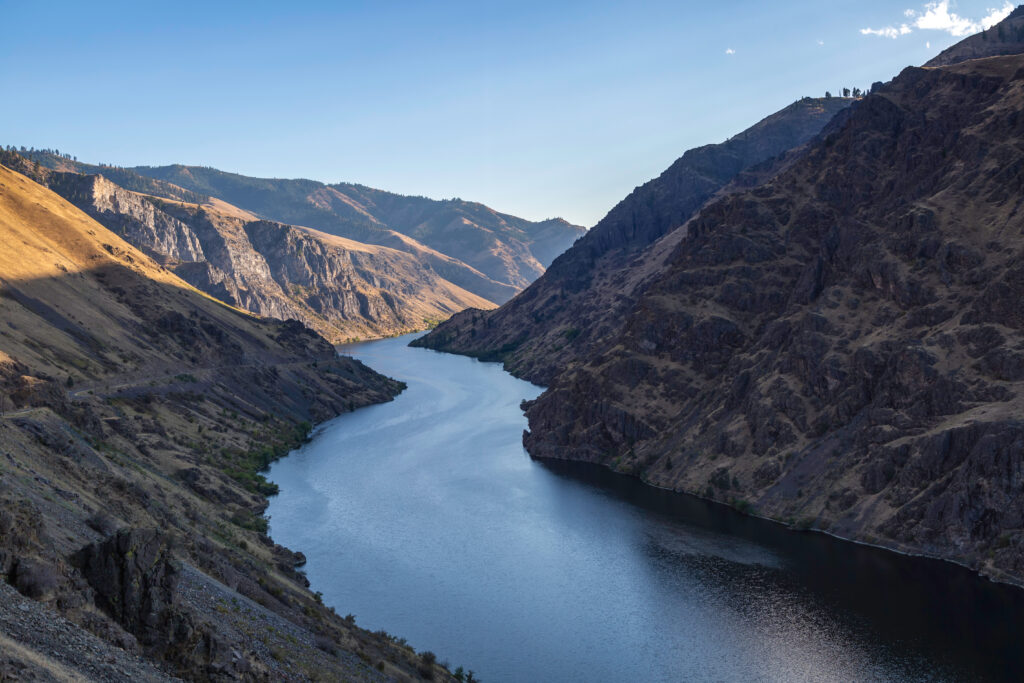
Wildlife thrives — bighorn sheep, elk, eagles — all moving through the canyon’s raw silence. For those who venture into it, Hells Canyon feels less like a place and more like a revelation of scale.
At dusk, the cliffs blush with copper light. The river murmurs below, relentless yet serene. It’s a reminder that the wild still endures — vast, uncompromising, and breathtakingly alive.
Newberry Crater: The Volcano Within

Near Bend lies Newberry National Volcanic Monument, one of Oregon’s most remarkable geological landscapes — a massive ancient volcano that spans 500 square miles.
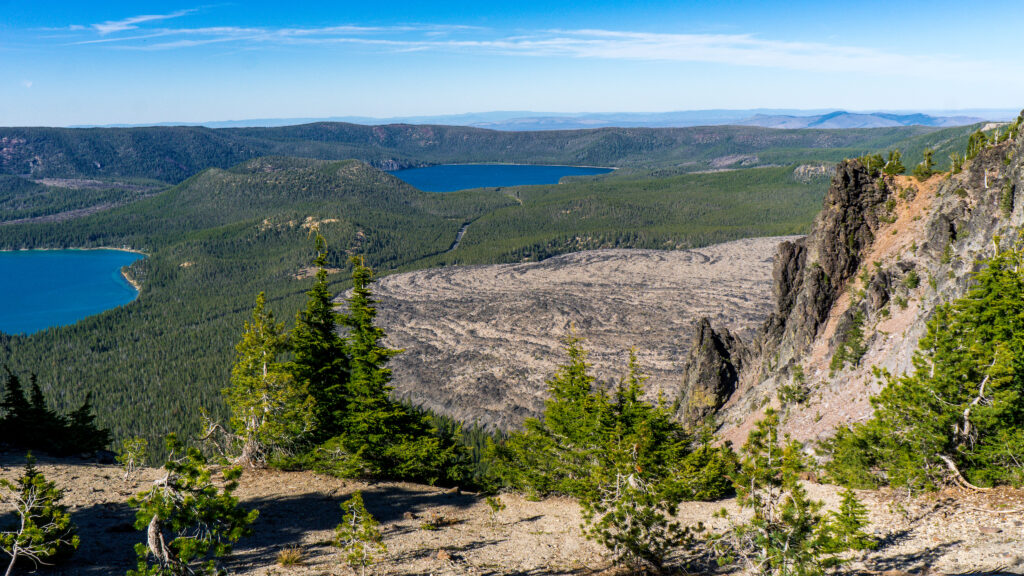
Inside the caldera, twin lakes — East Lake and Paulina Lake — glimmer in volcanic silence. Hike the Big Obsidian Flow, where glassy black rock crunches underfoot, or soak in natural hot springs while gazing up at the crater’s rim.
Newberry feels both primal and inviting — a place where creation is still visible, raw and recent. You can sense the fire beneath the earth here, the quiet pulse of something older than time.
It’s a landscape that humbles — reminding us that we walk upon stories still being written.
Florence: Gateway to the Dunes
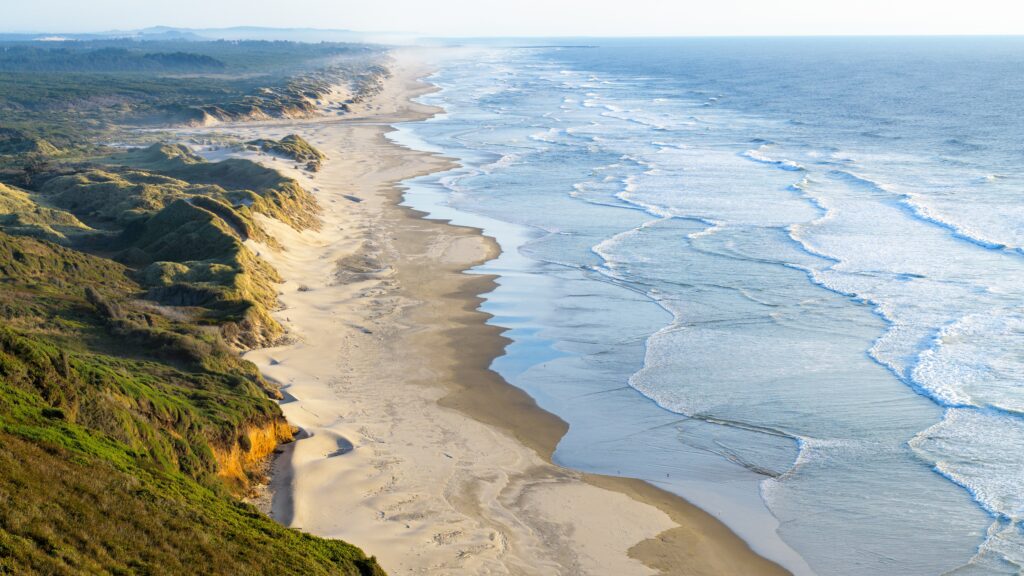
On Oregon’s central coast, Florence sits at the meeting of forest, river, and sand — a small town where the Siuslaw River empties into the Pacific amid dunes that shift with every breeze.
Its Old Town is all cedar shingles and sea air, lined with galleries and cafés where fishermen and travelers share the same easy rhythm. Nearby, the Heceta Head Lighthouse gleams from its cliff, watching over a coast perpetually shrouded in mist and legend.

Florence is a place of transition — between solidity and drift, between forest and sea. At sunset, when the sky burns rose and violet over the dunes, it feels as if the whole coast were breathing.
There’s poetry in its impermanence — a beauty that moves, erases, and renews.
The Oregon Coast Trail: The Journey Without End

To truly know Oregon, you must walk it — and the Oregon Coast Trail, spanning 362 miles from the Columbia River to the California border, is the state’s purest pilgrimage.
The trail follows beaches and headlands, crosses rivers and forests, and threads through towns where salt and humanity mingle. Hikers move through shifting light — fog one moment, sunburst the next — as gulls trace invisible paths overhead.

It’s not an easy journey. The tides dictate your rhythm, and solitude becomes both companion and teacher. But for those who walk it, the reward is profound: a living intimacy with Oregon’s wild edge.
Here, the world feels vast yet personal, endless yet immediate — a reminder that wonder isn’t a destination, but a direction.
Salem: The Quiet Heart of the Valley

Set amid the fertile fields of the Willamette Valley, Salem is Oregon’s capital, yet it carries none of the bustle one expects from a seat of power. Instead, it moves with a pastoral grace — a city of trees, rivers, and timeless calm.
The Oregon State Capitol, crowned by its golden pioneer, rises above green lawns where cherry blossoms bloom each spring. Around it, graceful neighborhoods and gardens unfurl — most notably the Willamette Heritage Center and the Deepwood Estate, which preserve Salem’s 19th-century soul in brick and ivy.

Flowing just beyond is the Willamette River, serene and reflective, threading through parks that seem to stretch forever. Locals stroll the Riverfront Park trails, cross the Peter Courtney Bridge, or simply watch the water glide past as the sun fades into the valley’s gentle haze.
But Salem’s spirit is more than civic or scenic — it’s agricultural, rooted in the rhythm of the land. Orchards, vineyards, and tulip fields encircle the city, reminding every visitor that Oregon’s richness begins in its soil.
In Salem, time seems to decelerate. The air smells faintly of earth and rain. Here, Oregon reveals its quiet confidence — its belief that beauty doesn’t need to announce itself; it simply is.

